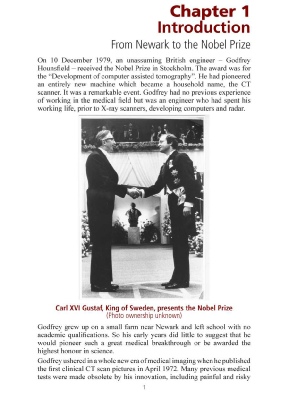
HOME REVIEWS INSIDE THE BOOK LINKS AND NOTES CONTACT US
ADDITIONS UPDATES FIRSTS SOURCES FREE EARLY CT SOFTWARE
Copyright © 2021. For enquiries about copyright use the “contact us” page.
GNHounsfield.org
A site about Godfrey Hounsfield

On 10 December 1979, an unassuming British engineer—Godfrey Hounsfield—received the Nobel Prize in Stockholm. The award was for the ”Development of computer assisted tomography”. He had pioneered an entirely new machine which became a household name, the CT scanner. It was a remarkable event. Godfrey had no previous experience of working in the medical field but was an engineer who had spent his working life, prior to X-ray scanners, developing computers and radar.
Godfrey grew up on a small farm near Newark and left school with no academic qualifications. So his early years did little to suggest that he would pioneer such a great medical breakthrough or be awarded the highest honour in science.
Godfrey ushered in a whole new era of medical imaging when he published the first clinical CT scan pictures in April 1972. Many previous medical tests were made obsolete by his innovation, including painful and risky tests in which patients felt as if they had been kicked in the head by a horse. His method was fast, pain-free, and made the most efficient use of the allowable X-ray dose. 40 years on from his great breakthrough, CT scanners are still in use all around the world, and millions of people have benefited from better diagnosis. Modern scanners have few features which were not first envisaged by Godfrey in 1968.
CT stands for computed tomography, in which a computer works out the three-dimensional structure inside the patient from X-ray beams which pass through the patient from many different angles.
Inside the book:
Introduction (page 1 of 3)